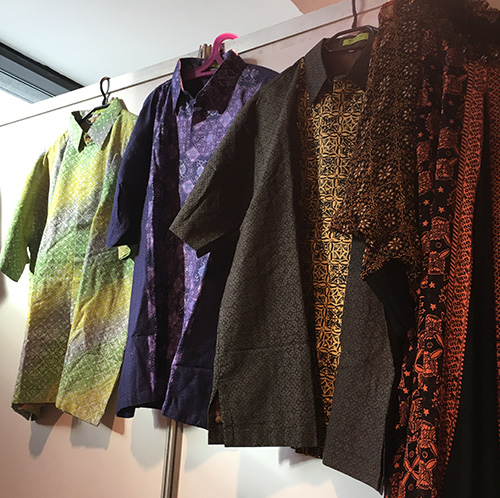 The batik cloth is a big part of Indonesian traditional culture. But what’s so special about it? How does it differ from any other fabrics around the world? Let’s find out a bit more about the batik and its role in the life of Indonesians. Why is this cloth still used in everyday life when a lot of handmade fabrics and folk clothing made from them are so rare and ousted by modern industrially-produced garments? Batik fabric is extremely popular in Asia and the Pacific region even in the 21st century. More than that, it’s widely used in some African countries as well.
The batik cloth is a big part of Indonesian traditional culture. But what’s so special about it? How does it differ from any other fabrics around the world? Let’s find out a bit more about the batik and its role in the life of Indonesians. Why is this cloth still used in everyday life when a lot of handmade fabrics and folk clothing made from them are so rare and ousted by modern industrially-produced garments? Batik fabric is extremely popular in Asia and the Pacific region even in the 21st century. More than that, it’s widely used in some African countries as well.
If you would like to see how a batik cloth is made, here you are a few links: Indonesian batik. It takes 14 steps to make batik fabric or Batik from Java island. The craft of making Indonesian batik
In general, batik is a cloth traditional for Indonesia. It is made using a unique wax-resist dyeing technique. Batik fabric is used not only in this country but also in Malaysia, India, Sri Lanka, and even in Africa, although, Indonesia (in particular, the island of Java) is the country of origin for batik.
This cloth is used to create both men’s and women’s traditional clothes. And these garments are so comfy, perfect for the local climate and lifestyle that they are widely worn in the modern days. Indonesian women wear torso wraps called “kemben” and skirt-like garments called “wiron” made from batik cloth. Men use sarongs (also sort of skirt-like outfits) and shirts sewn from batik as well. So, basically, this fabric is so very popular and important for Indonesian culture.

Sample of Indonesian batik from the Tropenmuseum in Amsterdam, the Netherlands
One of the main peculiarities of batik is its pattern. As we’ve mentioned, the pattern is created by the wax-resist dyeing technique, usually by hand. There are plenty of patterns with different colors and shapes used. The pattern on a particular batik is made according to the region where it is produced. Each part of Indonesia preserves its prints – there are batik designs typical for the coastal area, inland, particular islands (like Java, Bali, Sumatra), etc.
It’s interesting that the batik patterns of every region were created historically under the influence of different factors – that’s why they can differ greatly. For example, the coastal batik was formed by many various outside influences; the traders came to the coast and brought new ideas, shapes, colors, and symbols with them. So, we can see European flowers or Chinese phoenixes on these batik samples. The inland batik didn’t have such influences and has very different color palette and traditional ornaments.

Modern shirts made from Indonesian batik fabric
There are also patterns created specifically for certain special occasions, for certain ceremonies, for royalty, and so on. Of course, there are batik designs reserved for brides and grooms – they are believed to bring the couple happiness in marriage. Also, there are patterns for babies; the little things are carried in clings made in batik technique and embellished with symbols that are to bring good luck to the child. The batik cloth is a part of many folk rituals and ceremonies, like blessing a pregnant woman wishing her a successful pregnancy or a ceremony when a child touches the earth for the first time, etc. Sure, there are just ordinary batik patterns used in day-to-day life as well.
Batik is a big part of Indonesian traditional culture. It’s not just the local fabric but years of tradition, beliefs, and historical twists & turns incorporated in cloth. All the patterns are symbolic and regional. Batik is the means of transferring the tradition throughout generations. Fortunately, it’s still popular among Indonesians today.


